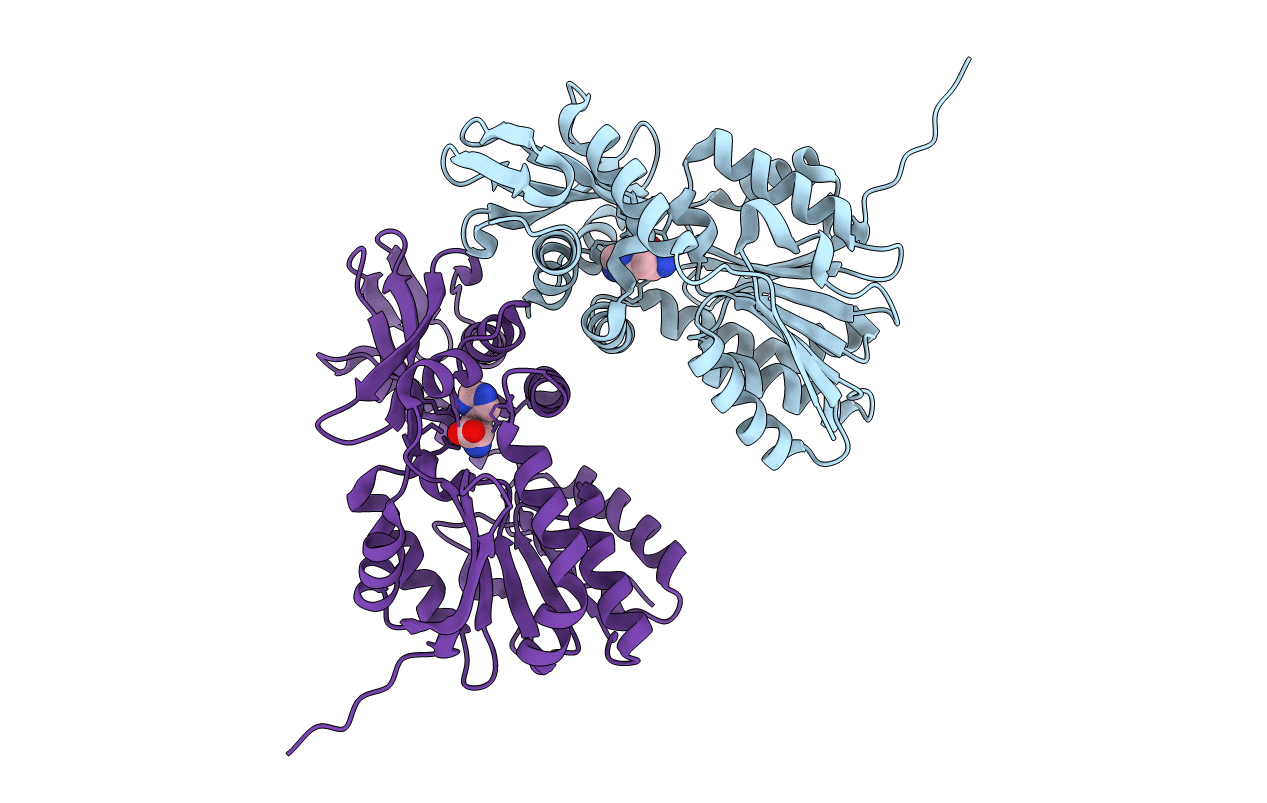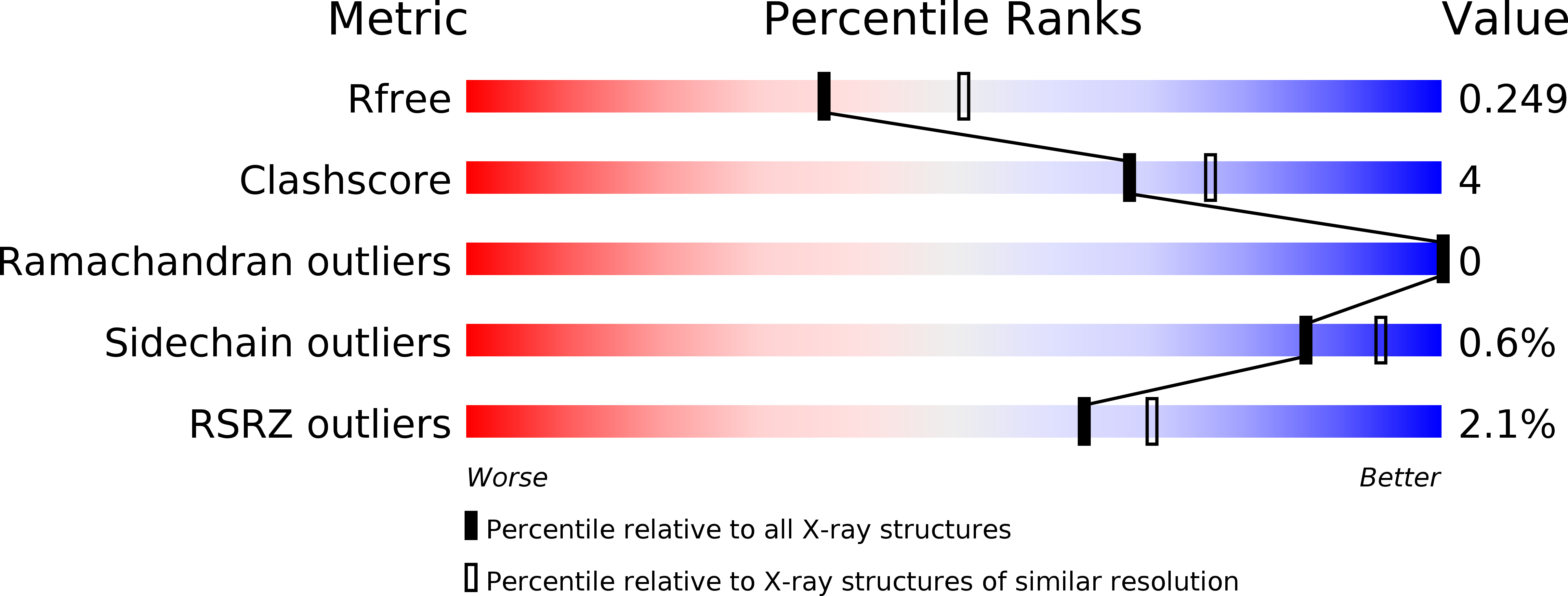
Deposition Date
2014-08-29
Release Date
2014-10-08
Last Version Date
2024-01-10
Entry Detail
PDB ID:
4UY7
Keywords:
Title:
Crystal structure of Histidine bound Histidine-specific methyltransferase EgtD from Mycobacterium smegmatis
Biological Source:
Source Organism:
MYCOBACTERIUM SMEGMATIS (Taxon ID: 1772)
Host Organism:
Method Details:
Experimental Method:
Resolution:
2.31 Å
R-Value Free:
0.24
R-Value Work:
0.19
R-Value Observed:
0.19
Space Group:
P 41


